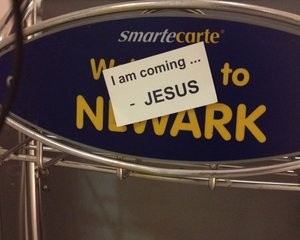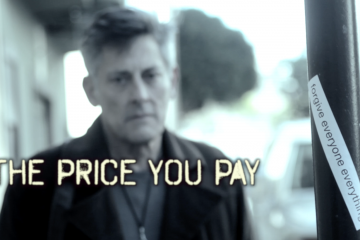5 SOULutions to San Francisco’s Housing Crisis
WARNING: There is no easy fix to the San Francisco Housing Crisis that does not inevitably piss someone off. If you followed “Has San Francisco SOULed Out: Part One”, then you have read why its so important that we get our heads out of the fog and start looking the hard truth in the face about who really is to blame for this mess. Surprise: we, the residents of this city, are ultimately responsible. But the good news is, our voice is mighty. Its time to shift from misplacing blame on the symptoms, encouraged by mass-media of Google bus protests, and instead unify that voice to vote for more supply. Only then, can we begin to work towards solutions that dig ourselves out of this hole and towards affordable housing for all.
*courtesy of Modern Luxury
Step #1 – Vote for Supply
There is no better way to make housing affordable than increasing supply. We need to incentivize building and allocate even more money towards affordable housing. What is this magic number that would finally relieve the housing demand, making rent control superfluous and the housing market affordable? SPUR estimates that 5,000 new housing units a year should be enough to not only arrest rising housing prices, but help make housing more affordable and available. To ensure this, we could aim to quadruple the current 16,000 affordable housing units, with a model similar to how the city of Vienna has supported affordable developments.
Red tape is strangling those who try to build. Many times, despite plans being approved, the city rejects, and delays progress. In underdeveloped and ex industrial areas such as Mission Bay, the Dogpatch and Bay View, rezoning would allow us to tackle the high demand, while still maintaining the historic character of San Francisco in other neighborhoods. Mayor Lee, who started his political career as a housing-rights advocate says “we want more money for affordable housing, but too often we oppose or scale back the very projects that generate those funds.”
Mayor Lee announced his goal of building or rehabilitating 30,000 homes by 2020, the equivalent of 5,000 each year. Lee has said he wants one third of the new units to be “permanently affordable” to lower income residents. Lets face it, San Francisco only has so much land, so we have no choice but to build up in certain areas or stay stagnantly trapped in rental purgatory. What can you do? Make your voice heard at hearings to add more supply to counter the demand.
Step #2 – Rent Control Reform
In a city where 64% of the population rents, politicians know it is political suicide to even utter the words “rental control reform”. However, reform does not mean getting rid of rent control all together. It means adopting changes that support growth and stability. I find it baffling that so many people defend a system that gives no real long term security for the very people we claim we are fighting to protect. It may be costly and arduous, but landlords still have the ability to evict tenants — and with the market conditions as they are, they do. So not only do rent control laws ultimately fail the tenants long-tern, the unintended consequences breed a frozen, rigid market, making it near impossible for property owners to develop and increase supply – which we have established as an economic necessity in correcting this Housing Crisis.
In order to actually protect those who currently depend on rent control, we need a market solution that allows an individual’s right to rent control on a unit to be decoupled from that unit when there are opportunities for development. For example, what if there was a program that bestowed “property rights” or “rent control rights” to the current renters, rather than the unit itself?
Imagine your landlord wanted to develop their property into more units (hence creating much needed supply). Now imagine, however, you have lived in this landlord’s $900 rent-controlled 1-bedroom for the last fifteen years. Lets assume you don’t make above the median income. In this day and age, all you can do is cross your fingers and hope that you don’t eventually get evicted. Is that a way to live?
However, what if long-term renters, like you, qualified to trade in their rent control for a contract on an equivalent or better $900 1-bedroom in a affordable housing new construction within 1 mile? This would be funded by taxing a percentage of the new developments, similar to the way that currently all new construction in San Francisco requires a percentage of all units to be Below Market Rate. This means, with every new development, there is also more benefit to creating more affordable housing.
This would give those with rent control the incentive and means to move to better units, freeing up the original owner to develop more units. If the tenant has no affordable housing to move to, then things stay as they are, and the property owners must fulfill their rent control obligation. Right now rent control essentially acts as a major barrier to using any property for the highest and best use. This approach allows tenants to realize upside in moving from a unit, a much needed incentive that helps markets remain liquid.
Take the old low income housing stock between City Hall and Fillmore for example. Most of those buildings could be torn down and developed at 3-4x the height/density, so that not only the current residents could continue to live there, but could accommodate 2-3x more residents on the same piece of land. It’s entirely possible to increase the height of buildings in many but not all parts of the city 2-4x without altering the physical character of the city much. This is certainly preferable to altering the personality of the city that we’ll suffer as more of us are priced out. After all, San Francisco maintains more of its character when there are more locals over newcomers.
Step #3 – Incentivize In Law Units
By an 8-2 vote, the legislation from Supervisor David Chiu was approved, allowing property owners with “Illegal In law units” built before January 1, 2013 to voluntarily apply to legalize them. These once Illegal In law units, an estimated 30,000, were a visible presence of the black market, predominantly driven by price ceilings. These could be apartments that are converted garages, unglamorous but livable spaces, that aren’t technically up to code, but do technically house people.
In order to get legalized, these “don’t-ask-don’t-tell” units would have to be brought up to code, with costs all paid by the owner. Then the property would be reassessed, prompting a significant tax increase. Although this is a huge step in the right direction, this can only be effective if landlords apply and can afford to legalize. What we can do, is support to vote for incentives, such as tax breaks for homeowners creating more rent-controlled housing , so we can actually take advantage of this new legislation.
Please click on the infographic below to see it bigger and in higher detailInfographic created by Marissa Mossberg, local GraphicsTender for www.BrandBarsf.com
Citations: US Census Bureau, SPUR.ORG, Mayors Office of Housing.
Step #4 – Get vacant units back on the market
There are 36,000 underutilized, vacant units in this city. Although there are a plethora of contributors behind this number, a huge reason is that rent control laws are so biased to renters, many landlords would rather keep their properties vacant than take a risk on a lifetime tenant or baby mama rental drama. Also, property values are rising so quickly that holding on to the property is considered a great investment.
We need to create conditions where the current 36,000 vacant units have incentives to become occupied. One way is to prompt the sale or use of these buildings is a multiple non-residence ownership tax. This isn’t a landlord tax. This is a tax on those units owned by someone who lives elsewhere, but keeps a housing unit as an investment. The goal is to make the tax on non-lived in units high enough that the owner loses money relative to the appreciation on the home. Either use it, share it, or pay the price for taking up much needed, underutilized space.
Step # 5 – Regulate Airbnb
As an artist, filmmaker, teacher, or anyone making under the median household income, like myself, we often have to make the tough choice between following our passions or having a secure lifestyle. Rent control used to be our dear friend, but with staggering Ellis Act evictions, many of us live in constant fear of getting forced out of our only opportunity to live in this promised land. Many of us have to decide between spending the majority of our time working at a job that pays the bills but delays passion projects or moving to slightly cheaper living situations (*cough* Oakland) in order to work less and have more time. When I discovered AirBnB, I thought I had found my golden ticket.
When my roommate moved out of our apartment, I started renting out my second bedroom to what I like to call “air-beibers” for $100 a night. I was paying my entire rent plus making profit with minimal time commitments and doing what I do best, being a quirky and hospitable San Francisco native. I was able to spend less time working, and actually finish post production on my documentary passion project. Once I finished my film, and I became financially stable again, I went back to having a long-term roommate. The opportunity cost haunted me at first, as I could make so much more money with short term rentals, but I felt like opening the room back to locals was the right thing to do considering the scarce rental market.
The trend, however, quickly caught on to the point that AirBnB in San Francisco has the highest concentration of users in the world. I started hearing of more and more folks who not only rented their extra space, but would go as far to keep their name on old leases, making thousands of dollars profit on these apartments. Some would use the money to live in better apartments or make a living off it!
This is where the line has to be drawn. What first seemed like a brilliant solution to ease affordability has quickly revealed itself as also one of the biggest, growing contributors to the housing crisis. Having SF residents rent their underutilized space, if they reside in their apartment and pay proper hotel taxes, should be perfectly legal. Its a win-win opportunity for all parties. However, keeping ones name on a lease, negatively driving up prices, should be deemed as an abuse considering the drastic demand for housing –and should be regulated.
In order to regulate, SPUR concurs, that we need to create a new Rent Control Enforcement office charged with ensuring that policies comply with laws protecting tenants, monitoring enforcement, and supporting research on rental housing. Currently there is not enough manpower to follow up on Ellis Act Evictions or Airbnb Subleasing abuse and this is a key part of the problem.
*SF Characters: ”Manny-Poppins”, “Frank Chu”, “Tamale Lady”, and “The Original Bushman”
In Conclusion
In 1847, San Francisco was home to 459 people and just two years later it had ballooned to 25,000 after the discovery of gold by James Marshall. If history had taken a different course those 459 souls living here back in 1847 had decided to act as we are today with archaic zoning laws, draconian regulations and the ability to abuse the California Environmental Quality Act via litigation over issues that are at best tenuously related to the environment, we would not have the city we love today. Think about those gold rush numbers for a moment. For the very few of us that can trace our history to an ancestor living in San Francisco in 1849, a whopping 98.2% would have to admit that their ancestor share an eery similarity to the techies arriving in the current “gold rush”.
Ask yourself, “What if those who had arrived in the city before I did had acted towards me with the same animosity I subject the current newcomers?”. San Francisco used to be such a welcoming place. What happened? If Mark Twain had arrived today, he would probably be treated as he deserved. Had Rudyard Kipling arrived today, would he instead be lamenting that San Francisco’s only drawback is that it’s hard to stay? If Oscar Wilde were to arrive in here in a few years, would he still claim that San Francisco possesses all the attractions of the next world, or would he leave feeling that its desperately clinging to nostalgia? H.L. Mencken praised us for being a place where he and thousands of other newcomers with him could get a subtle but unmistakeable sense of escape from the United States. I doubt he’d say the same since, we’ve drawn up the planks and told everyone arriving now that the ark is full.
We need to share the space or pay the price. The same people who complain about the affordability are the same folks complaining about the construction altering our skyline. We can’t have the city both ways. It requires compromise and change. Our skyline is beautiful, but lest we forget, cities are not cities without the people: the artists, bohemians, the disenfranchised, the eccentric locals, the small businesses, yes – even the techies, the creatives, and the crazy. Oh yes, we do need a little bit of crazy to keep San Francisco sane.
*San Francisco Housing Expo is a MUST-GO & FREE! I will be there volunteering for the Mayors Office of Housing June 14th 2014 to tell you how you can become a Below Market Rate Homeowner
* Housing Our City Speaker Series Sponsored by SPUR.org Tuesday, May 6, 2014 | 6:00 p.m.









